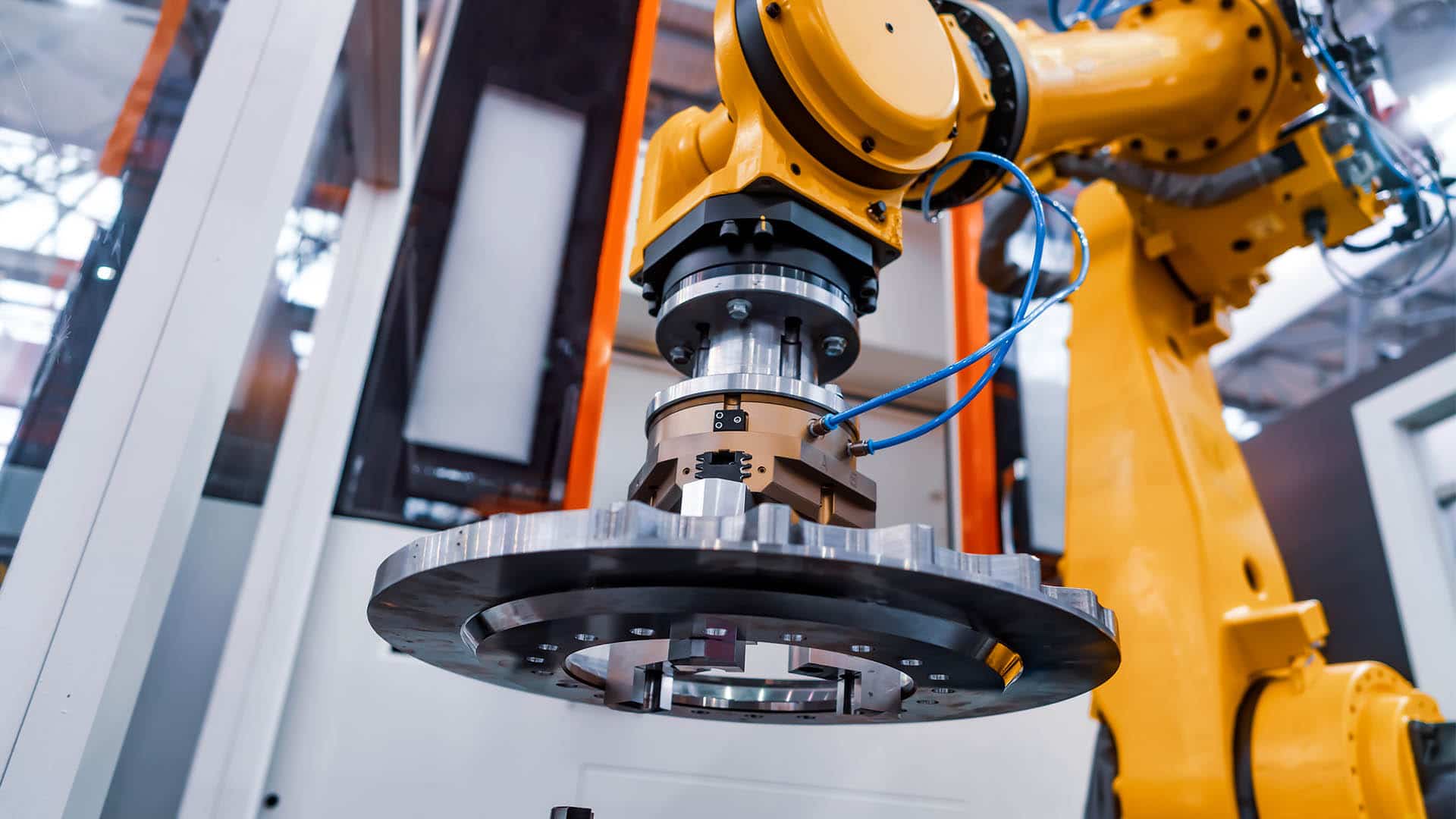As we navigate the early years of the 21st century, the influence of Artificial Intelligence (AI) and robotics in our daily lives is growing at an unprecedented rate.
From smart home devices that obey our every command to advanced manufacturing robots, these technologies are steadily becoming integral components of our social and economic landscape.
The million-pound question, then, is whether we are truly prepared for a future where AI and robotics play a central role.
This blog aims to scrutinise this pertinent question, evaluating both the prospects and challenges that lie ahead as we edge closer to a future deeply entwined with machine intelligence and automation.
The Current State of AI and Robotics
The current state of AI and robotics is nothing short of extraordinary, and advances in machine learning algorithms, computational power, and data storage capacities have opened doors to possibilities that were once the stuff of science fiction.
Today, these technologies power everything from the algorithms that curate our social media feeds to the robots that assist in complex surgical procedures. In sectors like healthcare, transport, and finance, AI and robotics have not only streamlined operations but have also introduced new avenues for innovation and growth.
However, the technology’s rapid evolution also underscores a growing divide between what is technically possible and our societal understanding of these capabilities.
There is a palpable tension between the pace at which these technologies are advancing and the speed at which regulatory bodies, ethical committees, and the general public can adapt.
This discrepancy poses a challenge in ensuring that these technologies are integrated into society in a responsible manner, raising questions about our collective readiness for a future dominated by AI and robotics.
Potential Benefits of a Future Dominated by AI and Robotics
Economic Advantages
The economic advantages of adopting AI and robotics are manifold. For starters, automating repetitive and labour-intensive tasks can significantly reduce operational costs.
Moreover, these technologies offer the potential for unprecedented economic growth by opening new markets and creating novel business models.
The economic upshot isn’t limited to any particular sector; it has broad implications across industries.
For example, in manufacturing, robotics can augment production efficiency, ensuring that goods are produced at lower costs with consistent quality. In healthcare, AI can perform complex diagnostic tasks that would otherwise take human professionals considerably longer, thus increasing efficiency and reducing costs.
Technological Innovation
The role of AI and robotics in fostering technological innovation cannot be overstated. By handling complex computations and data analyses, these technologies enable scientists and researchers to make breakthroughs at a much faster pace.
For instance, AI algorithms are currently being used in drug discovery, providing valuable insights that accelerate the research process.
Beyond accelerating existing methods, AI and robotics are pioneering entirely new ways of solving complex problems. Consider the case of climate modelling: AI can sift through vast amounts of data to predict environmental changes with a degree of accuracy previously thought unattainable.
These tools are not merely adjuncts to human endeavour; they are at the forefront of pioneering research and development.
Social Benefits
From personalised education platforms to advanced healthcare diagnostics, AI and robotics have the potential to revolutionise social structures for the better. AI could facilitate bespoke learning experiences tailored to individual needs, levelling the playing field and potentially eradicating educational inequalities.
In healthcare, robotic surgical assistants and AI-driven diagnostic tools can significantly improve patient outcomes.
However, these social benefits are not guaranteed to be uniformly distributed. There’s a real risk that the advantages of AI and robotics could be disproportionately reaped by those who are already privileged, thereby exacerbating social divides.
Ensuring equitable distribution of these technologies is a challenge that society must address as we move closer to a future dominated by AI and robotics.
Concerns and Challenges
Job Displacement
All this news about AI advancements might have you questioning your job or jobs that will disappear by 2050, for example.
While AI and robotics promise economic and technological advancements, they also pose significant challenges, one of which is job displacement. Sectors such as manufacturing, transport, and even some white-collar jobs are at risk of automation, which could result in mass unemployment if not managed prudently.
Governments and organisations must recognise the need for significant job retraining programmes. As traditional roles become obsolete, there’s an urgent necessity to equip the workforce with skills that complement the new technology-driven landscape. The state has a pivotal role to play in ensuring that employment policies are future-proof.
Ethical and Moral Issues
The ethical and moral dimensions of AI and robotics are often a Pandora’s Box of dilemmas. Questions about the impartiality of AI algorithms and the ethical implications of autonomous decision-making are just the tip of the iceberg.
As these technologies find applications in law enforcement, healthcare, and even judiciary processes, the stakes become higher, making ethical considerations all the more crucial.
Data privacy is another pressing concern. With AI algorithms that can predict everything from consumer behaviour to potential health issues, there are considerable risks associated with data misuse.
Regulations like the General Data Protection Regulation (GDPR) in the European Union are steps in the right direction, but as the technology evolves, so must the regulatory frameworks that govern their use.
Security Risks
Another significant challenge is the security risks associated with AI and robotics.
The very features that make these technologies powerful—autonomy, learning ability, and complex decision-making—also make them susceptible to misuse. From autonomous weapons to AI-generated fake news, the potential for these technologies to be weaponised is a grave concern.
Cybersecurity is also a significant issue; as AI systems become more integrated into critical infrastructure, they become attractive targets for cyber-attacks.
The sophistication required to secure these systems will have to evolve in tandem with the technologies themselves to mitigate risks adequately.
Government and Regulatory Response
Governments around the world are beginning to understand the transformative potential of AI and robotics, and many are actively investing in these technologies. However, the effectiveness of these investments is only as good as the regulatory frameworks that guide them.
For example, the UK’s Centre for Data Ethics and Innovation aims to scrutinise AI’s impact on society and advise on beneficial governance practices.
However, a piecemeal approach to regulation won’t suffice; there needs to be a comprehensive strategy that addresses the multi-faceted challenges these technologies present.
While some countries are making strides in developing robust governance models for AI and robotics, the global community has a long way to go to standardise practices and ensure ethical considerations are universally upheld.
Is Society Prepared?
Public Awareness
When it comes to public awareness about the implications of AI and robotics, the picture is rather mixed. On one hand, there is a growing interest and excitement surrounding these technologies, evidenced by increased media coverage and public discourse.
On the other hand, this enthusiasm often coexists with misunderstandings and even fear, fuelled by dystopian portrayals in popular culture.
Education plays a crucial role in shaping perceptions, and more needs to be done to improve public understanding of these technologies. Information should be disseminated in a manner that is both accessible and balanced, giving the public the tools they need to form educated opinions.
Educational System
The educational system has a monumental role to play in preparing society for a future dominated by AI and robotics.
The curriculum must evolve to equip students with the skills they’ll need to navigate a rapidly changing job market. Initiatives such as coding classes in primary schools and AI ethics courses in universities are commendable but need to be more widespread.
There’s also a need for interdisciplinary education, blending technical skills with ethical and social understanding. A future dominated by AI and robotics isn’t merely a technological revolution; it’s a societal shift that demands a multifaceted educational response.
Industry Preparedness
The industrial sector has been relatively quick to adopt AI and robotics, largely driven by the promise of increased efficiency and profitability.
However, this adoption is not uniform across all industries or regions, and there exists a gap between sectors that have embraced these technologies and those that are yet to take the plunge.
Furthermore, industries must also prepare for the ethical and regulatory challenges that come with the adoption of AI and robotics.
Corporate responsibility goes beyond mere compliance with existing laws; companies must be proactive in understanding the broader implications of their technology, contributing to ethical standards and best practices.
Conclusion
As we stand on the precipice of a future dominated by AI and robotics, it’s clear that these technologies offer both unprecedented opportunities and complex challenges.
While economic, technological, and social benefits are tangible, they are counterbalanced by concerns over job displacement, ethical quandaries, and security risks.
Governments, industries, and society at large have a collective responsibility to navigate this complex landscape prudently.
Are we prepared? The jury is still out, but one thing is clear: preparation for this future is not just advisable; it is imperative.






